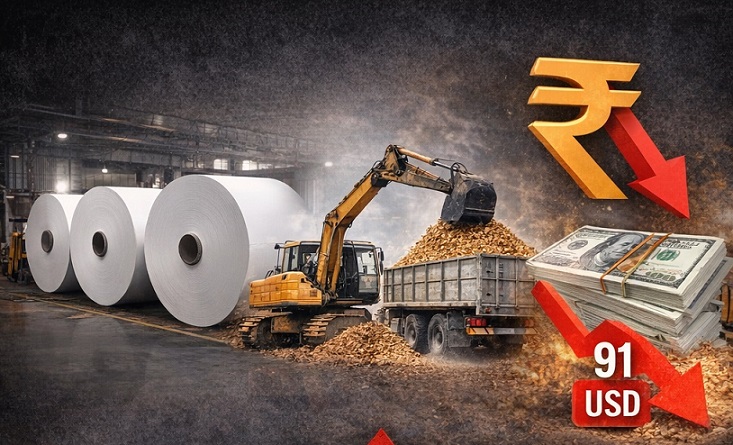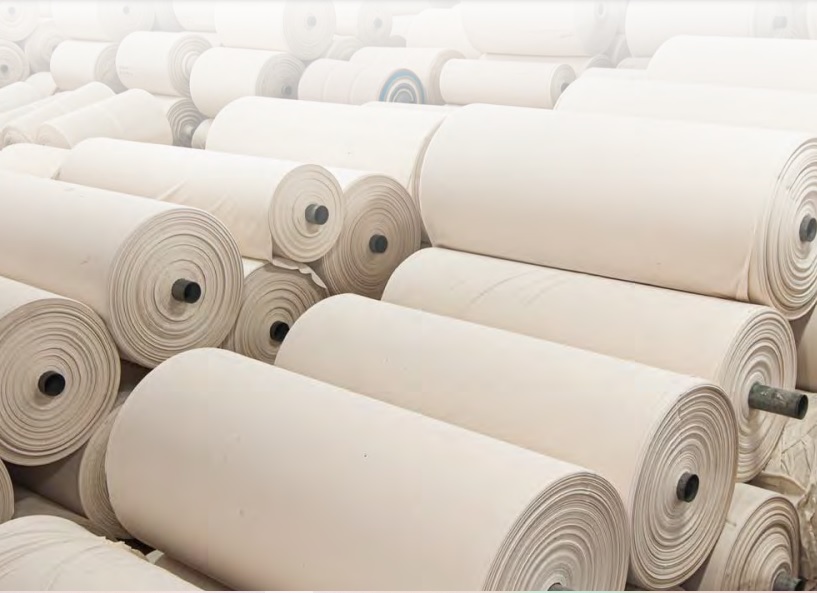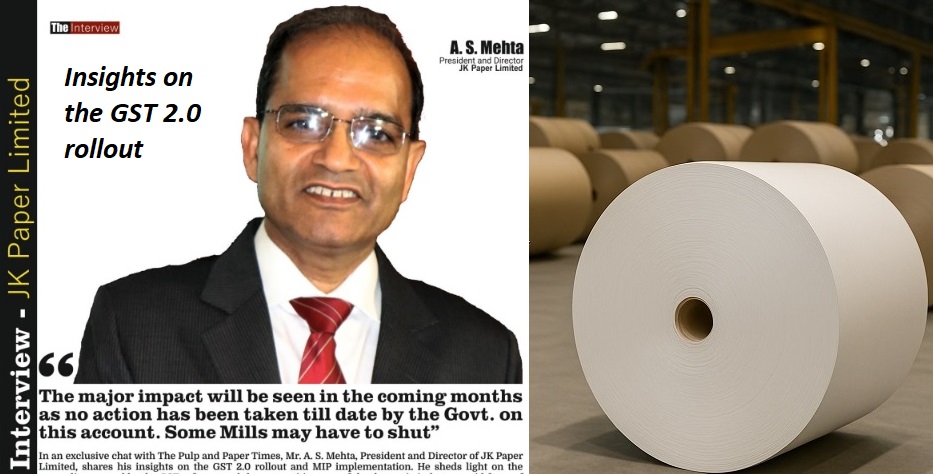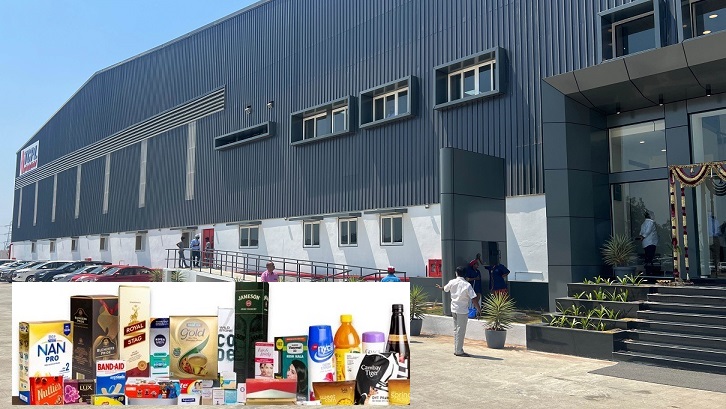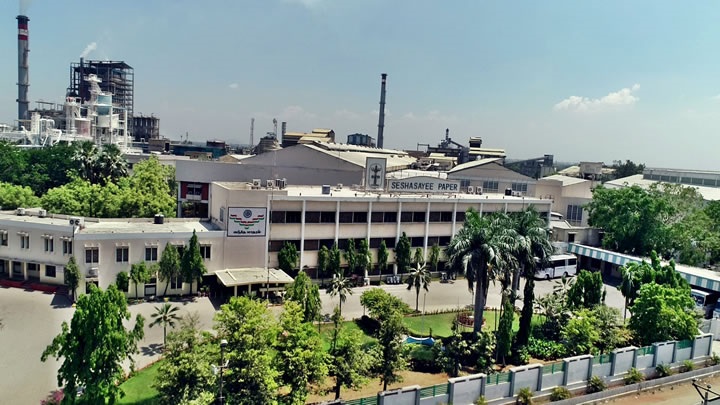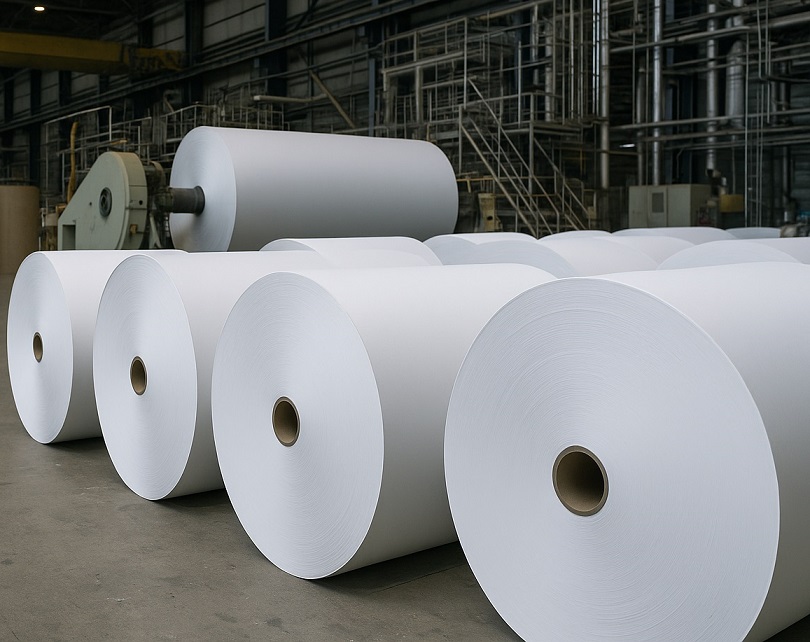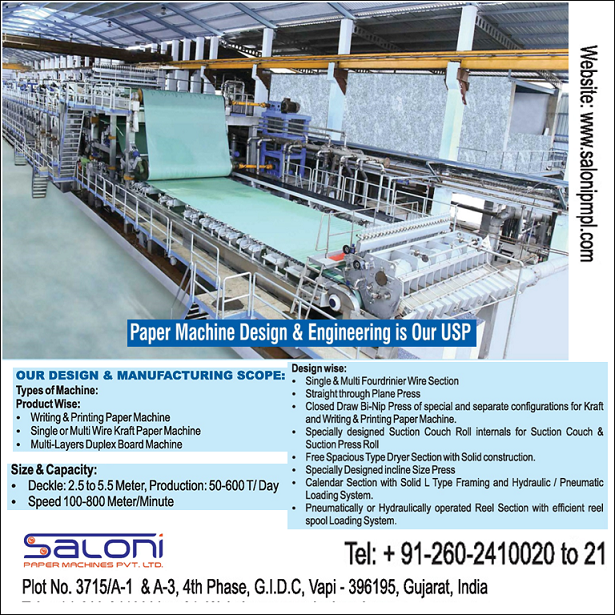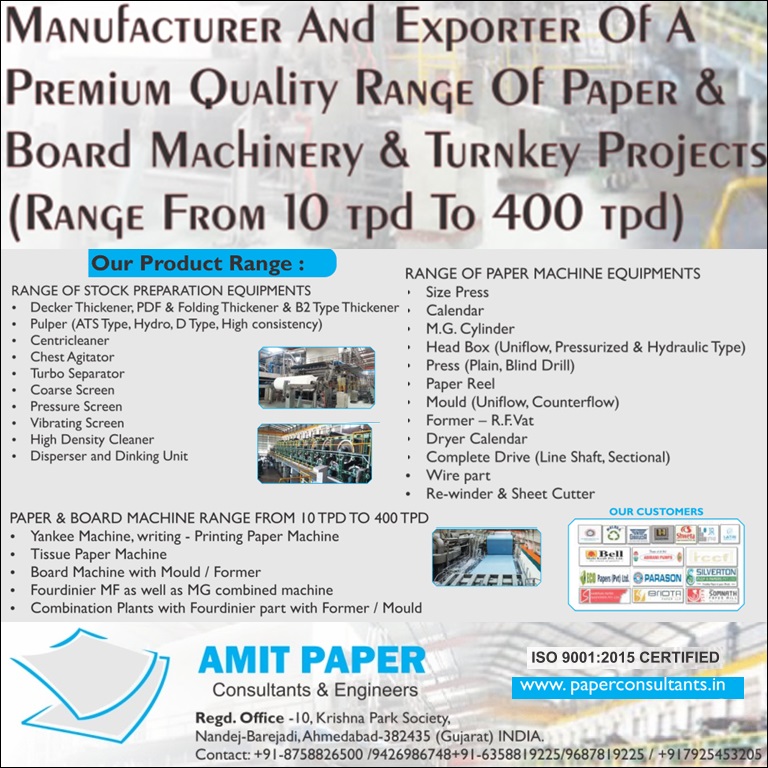Satia Industries targets high-realization paper segment, PM3 revamp to unlock high-quality maplitho, chromo, and artboard paper production
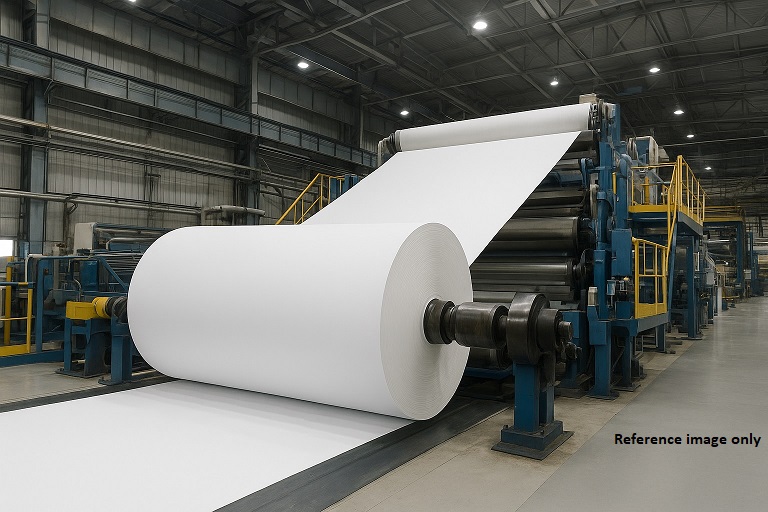
Satia Industries targets high-realization paper segment, PM3 revamp to unlock high-quality maplitho, chromo, and artboard paper production
-Satia Industries also had a substantial demand from Bangladesh and Nepal
-PM-3 has the potential to produce high-quality SS Maplitho paper, plan to produce paper for gutka manufacturers
-Mr. R.K. Bhandari, Joint Managing Director of Satia Industries, addresses the earning conference call for Q4FY25 on 27th May 2025
The Pulp and Paper Times
Financial Year 2025 proved to be a challenging year for the Indian paper industry and for Satia Industries as well, primarily due to increased imports from ASEAN countries, which adversely affected net realizations across the industry, leading to a decline in margins for Financial Year 2025. However, Satia was not only able to maintain its volumes for the year but also witnessed a marginal improvement in the quantity sold, owing to its strong distribution network and goodwill.
Q4 and FY25 Results:
Addressing shareholders during a conference call on Q4 and FY25 results, Mr. R.K. Bhandari, Joint Managing Director of Satia Industries, stated: “Our Q4 Financial Year 2025 revenues declined by 8% year-over-year to INR 3,967 million, largely due to pricing headwinds. However, we did see a 6% improvement quarter-on-quarter, indicating a positive shift.
EBITDA for the quarter, while down year-over-year, grew sequentially by 16% to INR 615 million. Our profit after tax for the quarter stood at INR 354 million.
For the full Financial Year 2025, our revenue was INR 15,120 million, reflecting a 12% year-over-year decline. The primary impact of lower realization was felt on our EBITDA as well, which declined by 35% year-over-year to INR 2,703 million. Profit after tax for the year was INR 1,186 million.
Despite the challenging market, we currently hold a healthy order book of over one month. For Financial Year 2026, we are planning a critical capacity enhancement of our PM3 plant. This will necessitate a planned shutdown of approximately six months.
A new chemical recovery boiler is also planned and will be commissioned in Financial Year 2028, with the full benefits expected to be realized in Financial Year 2029. These investments underscore our commitment to long-term growth and operational efficiency,” he said.
Expansion on PM3:
Mr. Bhandari further informed, “We are planning to shut down PM3, most likely in July, for two major upgrades. First, the current finished deckle width of the machine is around 2.85 meters, which we plan to increase by approximately 10%. Second, we intend to increase the present machine speed from 650 meters per minute to about 900–950 meters per minute — an increase of nearly 50%. Currently, this machine produces around 160 tons per day. We plan to enhance this to an additional 50 to 60 tons per day, which will add nearly 20,000 tons annually.
However, owing to delays in the supply of specific PM3 components from vendors, the company has decided to reschedule the PM3 maintenance shutdown to the latter part of the current financial year, Mr. Chirag Satia, ED of SIL said during Q1 FY26 results.
The CAPEX for PM3 is over INR 200 Crore, approximately INR 225 Crore. A part of it, around INR 1,00 crore, has already been spent, and the remainder will be incurred in this financial year.
Responding to a question on the payback for PM3, Mr. Bhandari elaborated on future plans: “After this expansion, the quality will definitely improve. Like PM4, where we have successfully introduced copier paper and are increasing our market share in the copier segment, this machine too has the potential to produce high-quality SS Maplitho paper.
That’s one. Secondly, the machine has potential for other high-value products like chromo paper and artboard paper — the kind used by gutka manufacturers. That paper fetches a very high realization of almost INR 90,000 to INR 100,000 per ton.
So, these are the plans for PM3. We aim to diversify our sales from primarily serving the government segment to targeting higher-end products in the open market. While continuing to serve the government, we plan to strengthen our position in the open market as well.
The high-end ultra print quality and super printing paper that we produce is almost equivalent to that from any A-grade paper mill. Our ultimate focus is to increase the share of such products to more than 30%–40% of total production. PM4 is already capable of manufacturing such quality. Every year, we are increasing the volume of photocopier and high-end printing paper — which yields the best realizations.
Once PM3 is upgraded, it will reach the same level. Within one to two years, the high-end segment is expected to contribute over 50% of our total production,” Mr. Bhandari anticipated.
“In the current year, this Financial Year 25-26, we will be shutting PM3 in the month of July, and if the shut remains anywhere around six months, this year we made almost 2,15,000 tons of paper. So, this will reduce production by almost 25,000 to 30,000 tons this year. If the machine starts well in time in December itself, then maybe with higher speed we are able to make up some of the loss. But this year that loss of production is likely to come to almost 30,000 tons. So, in pricing terms, it should be anywhere around 400–500 Cr.” Mr. Bhandari said.
Anticipation on Paper Prices and Market:
On the market outlook, Mr. Bhandari noted, “The last two months have been better than the preceding quarter. Prices have increased by almost 10% to 15%. We expect this trend to continue until June, i.e., the first quarter. What happens in the second quarter will depend on the international situation. At the moment, the situation in China is not favorable, so there is a lot of uncertainty in the market. But until June, the first quarter should be better than the last quarter, price-wise.”
Regarding the impact of the New Education Policy, Mr. Bhandari excitedly remarked, “A major portion of the demand — over 50% to 60% — is directly or indirectly from government purchases. Normally, the period starting from January is low in demand, but this year we are witnessing robust demand.
We are unable to fulfill market demand due to the surge caused by the New Education Policy.
There have been significant syllabus revisions, and publishers are changing their books accordingly. The government is also increasing its spending under the Sarva Shiksha Abhiyan. That budget is rising too.
So yes, the robust demand in India presently is mainly due to the New Education Policy. However, the impact is gradual — not a sudden outburst of demand.”
“We also had a substantial demand from Bangladesh — they wanted over 10,000 tons of paper within two months. As we are already booked for over a month, we were unable to fulfill that. Similarly, Nepal has recently requested about 3,000 tons to be supplied over the next two months.
All this is a result of the focus of various governments — including ours — on improving literacy rates. That’s leading to a better market for writing and printing paper,” he added.
On Dumping of Paper from Asian Countries:
In response to a question about paper dumping from Asian countries, Mr. Bhandari stated: “Dumping is continuing. Prices remain in the range of USD 710 to USD 720. However, Indian mills are still experiencing good demand. I think this scenario is likely to persist for some time.
They are doing their job; we are doing ours. The industry will have to continue operating under these circumstances.”
Web Title: Satia Industries targets high-realization paper segment, PM3 revamp to unlock high-quality maplitho, chromo, and artboard paper production





 Join WhatsApp Group
Join WhatsApp Group Join Telegram Channel
Join Telegram Channel Join YouTube Channel
Join YouTube Channel Join Job Channel (View | Submit Jobs)
Join Job Channel (View | Submit Jobs) Join Buy Sell Channel (Free to Submit)
Join Buy Sell Channel (Free to Submit) Paper News Headlines Channel (Free to read)
Paper News Headlines Channel (Free to read)





